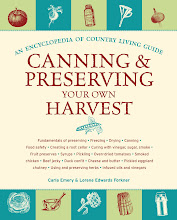This is the first in a series of posts about soil. Every gardener knows that the key to healthy and happy plants is good soil, so we will plumb the depths of Encyclopedia of Country Living wisdom here about steps you can take to make your soil the very best it can be. We'll start with Carla Emery's simple definition of "What's Organic" when it comes to soil, then move onto compost.
What’s “Organic”?
In this context, “organic” material means material left over from something that was once alive—plant, animal, tree, seaweed, leaf, sawdust. Any organic material is a natural fertilizer. Manure is also organic and natural and is a good fertilizer. A “chemical fertilizer” is the opposite of organic in that it is basically a petroleum product. In garden stores you can buy a range of both organic and chemical fertilizers.
You can also make your own organic fertilizer. Compost, green manure, and manure, together with bedding from where your animals live, are your 3 big options for home-grown fertilizer. These home-grown fertilizers are also “organic” in the sense of the word that means “free of toxic chemicals.” “Natural fertilizing” basically means returning to the soil all the plant and animal residues that came from it originally. You can collect the best animal fertilizer from where your animals sleep: their manure. You can make the best “vegetable” fertilizer-compost.
Compost
This is simply decayed organic material. Anything that was once alive makes good compost: leaves, coffee grounds, grass clippings, kitchen food scraps. But avoid meat, fat, cooking oils, and grease; they’re slow to decompose and their odors could attract rodents. In general, you make a pile of the stuff; a bottomless wooden box at least 3 × 3 × 3 feet works well. Turn your pile with a pitchfork once a week to sort of stir it, and keep it damp with a hose. Manure works the same way: Pile it up outside the barn and let it winter there. You really don’t need to do anything else. In spring it will be ready to put on. Fresh organic material isn’t ready for your plants to absorb. It can do more harm than good if you try to hurry it along. Manure that isn’t well rotted will kill your plants. Composting is, in a nutshell, a set of techniques for hurrying up natural decomposition so you can get that organic material on your garden more quickly.
You can compost right in the garden. In the fall, spread a layer of decayable stuff on the ground: grass clippings, leaves, weeds, vegetable scraps. Spread a 2-inch layer of manure on top of that. Now scatter lime or wood ashes saved from your wood cookstove on top of that, and cover with straw. Red worms are better than earthworms at helping this process along, but once composting starts, garden worms will come. Water occasionally if the weather isn’t doing the job. When you are ready to cultivate in the spring, dig this all into the upper 4 or 5 inches of your ground. Try Stu Campbell’s 1990 revision of the classic Let It Rot! The Gardener’s Guide to Composting or Don’t Waste Your Wastes—Compost ’Em: The Homeowner’s Guide to Recycling Yard Wastes by Bert Whitehead (1991). Or order Urban Home Composting: Rodent-Resistant Bins and Environmental Health Standards for $10 from City Farmer, 604-685-5832; fax 604-685-0431; 801-318 Homer St., Vancouver, BC V6B 2V3, CANADA.
skip to main |
skip to sidebar

 Posts
Posts

 Posts
Posts
Related LInks
Follow Sasquatch Books on Twitter
Search This Blog
Encyclopedia of Country Living blog
Sasquatch Books
Subscribe to RSS Feed









No comments:
Post a Comment